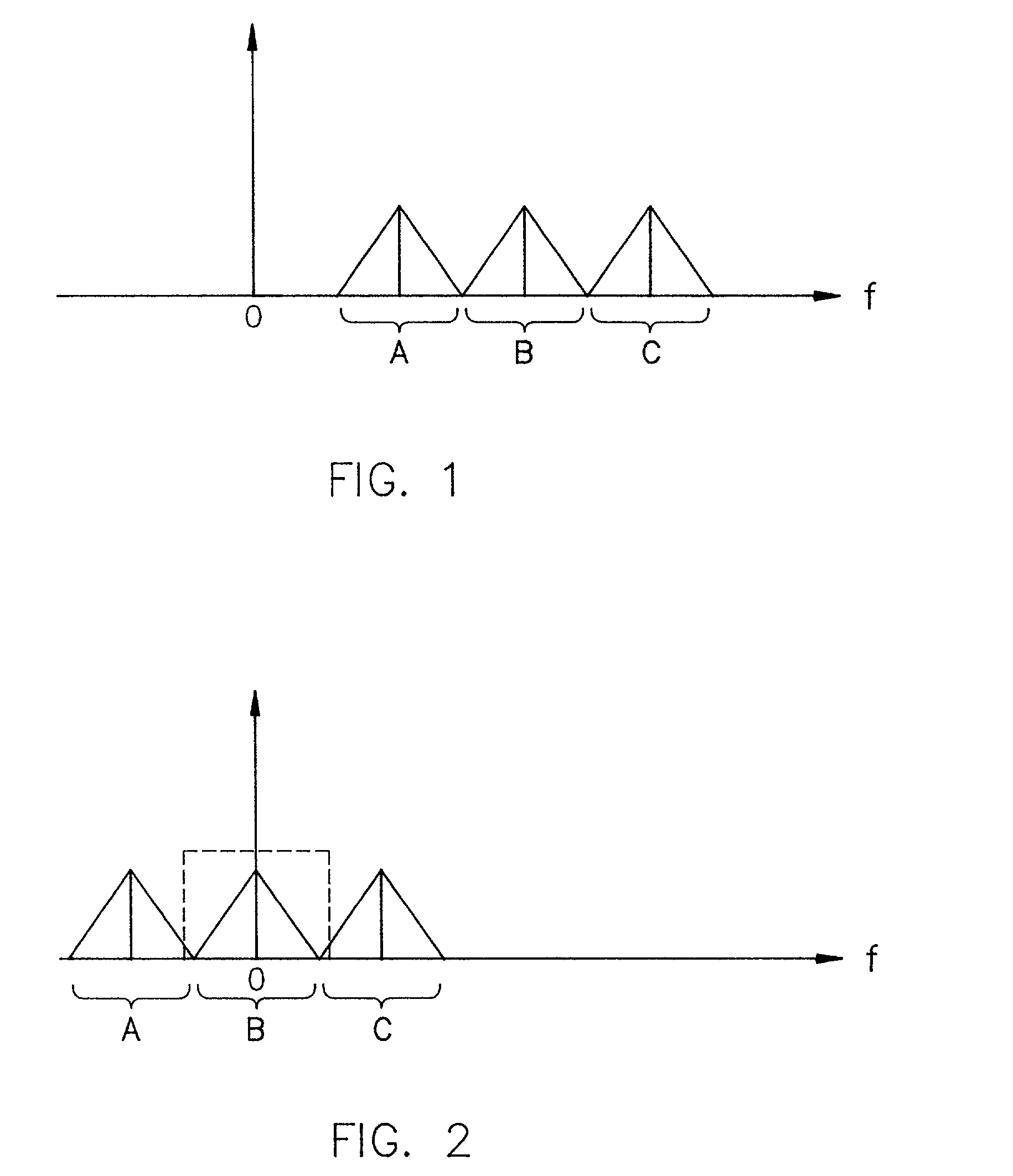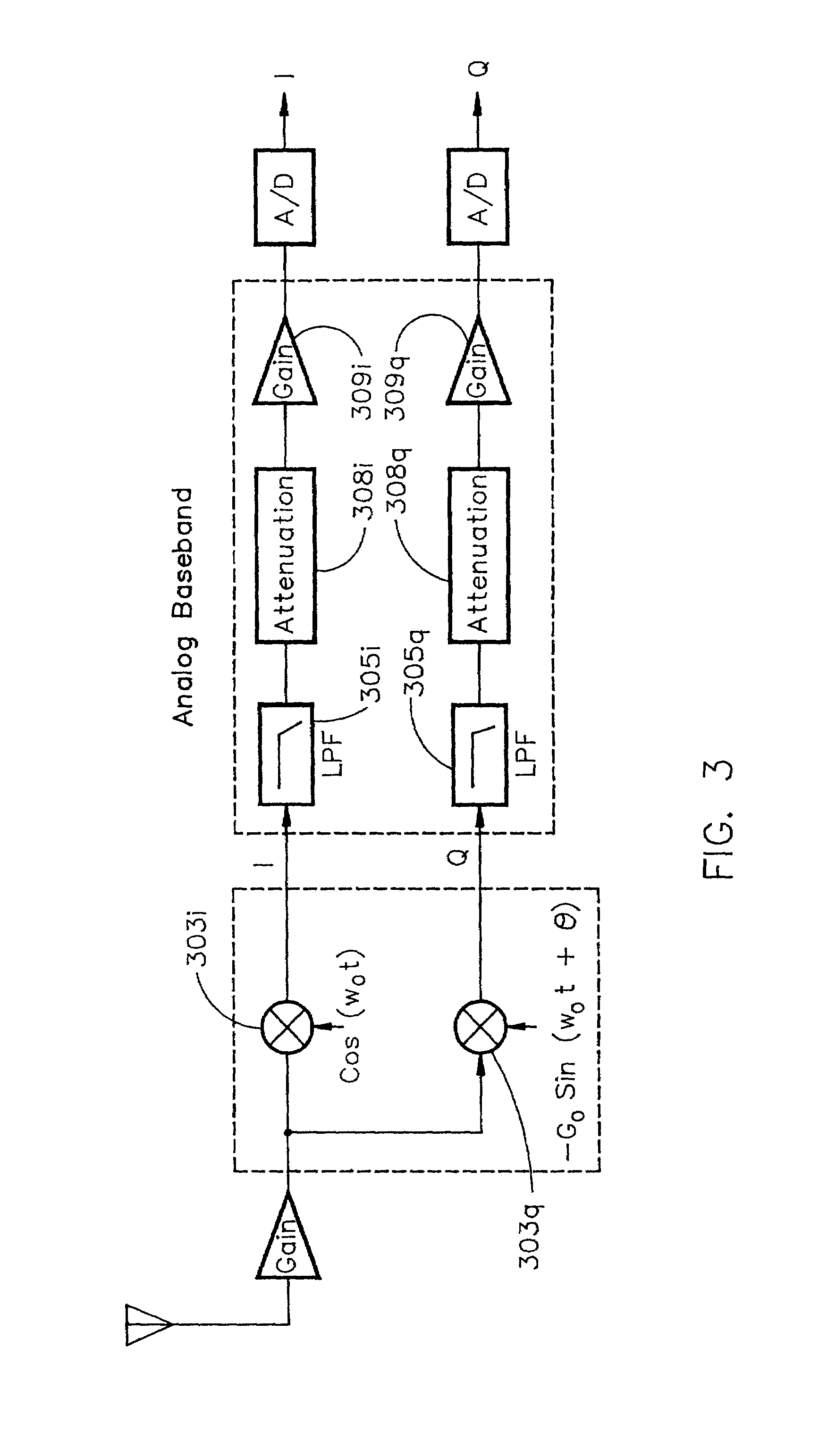Direct conversion receiver using a dithered local oscillator to mitigate adjacent channel coherent interference
a local oscillator and receiver technology, applied in telephonic communication, substation equipment, electrical equipment, etc., can solve problems such as frequency modulation (fm) notching, phase and gain errors, frequency modulation and other problems, to achieve the effect of reducing the phase and gain error of the quadrature of the signal
- Summary
- Abstract
- Description
- Claims
- Application Information
AI Technical Summary
Benefits of technology
Problems solved by technology
Method used
Image
Examples
Embodiment Construction
[0033]FIG. 6 is a block diagram of a direct conversion receiver 600 according to one embodiment of the invention. The direction conversion receiver 600 includes an antenna 603, a radio frequency (RF) front end 605, a primary local oscillator (LO) 608, a post-conversion processing block 611, a dithering controller 620, and an amplitude modulation (AM) / frequency modulation (FM) demodulator has In-phase and Quadrature (I / Q) block 640. The receiver 600 may be any direct conversion receiver that has In-phase and Quadrature (I and Q) channels.
[0034]The antenna 603 receives a radio frequency signal and provides it to the RF front end 605. The RF front end 605 may perform any known type of signal processing and conditioning, including filtering, pre-amplification, etc. The primary local oscillator 608 down-converts the received signal to zero Hertz. The down-conversion produces a de-modulated data stream of the data that was modulated onto the carrier wave for transmission. The post-convers...
PUM
 Login to View More
Login to View More Abstract
Description
Claims
Application Information
 Login to View More
Login to View More - R&D
- Intellectual Property
- Life Sciences
- Materials
- Tech Scout
- Unparalleled Data Quality
- Higher Quality Content
- 60% Fewer Hallucinations
Browse by: Latest US Patents, China's latest patents, Technical Efficacy Thesaurus, Application Domain, Technology Topic, Popular Technical Reports.
© 2025 PatSnap. All rights reserved.Legal|Privacy policy|Modern Slavery Act Transparency Statement|Sitemap|About US| Contact US: help@patsnap.com



